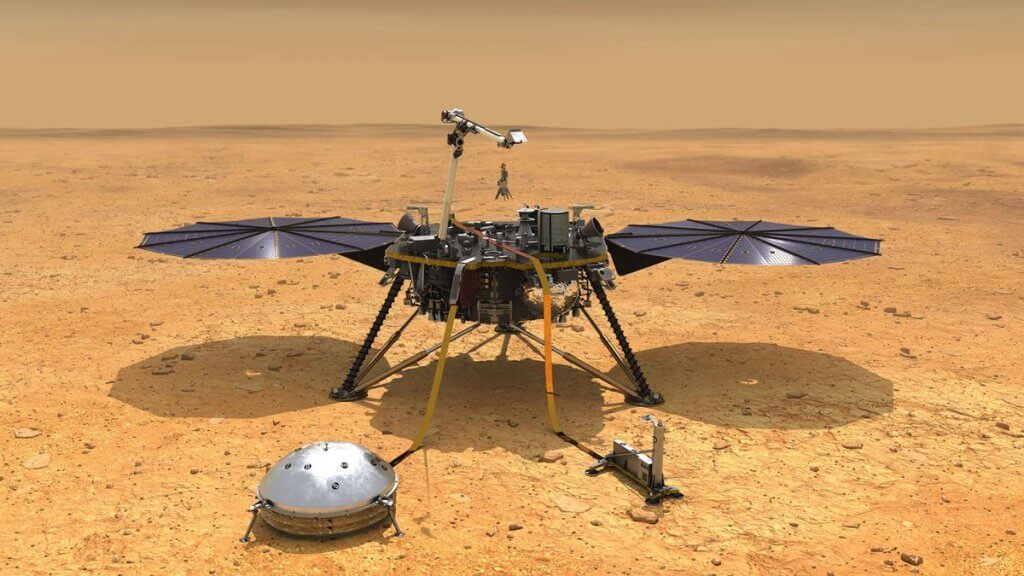The strongest-ever quake to violently shake Mars arose not because of a crashing asteroid but rather the tectonic forces within the planet itself, scientists reported on Tuesday (Oct. 17). The new findings show the Red Planet is more seismically active than previously thought.
On May 4, 2022, NASA‘s now-retired InSight lander recorded a magnitude 4.7 quake, five times stronger than the previous record holder of magnitude 4.2 that InSight measured in 2021. Unlike most marsquakes that cease within an hour, the reverberations from the summer quake continued for a record six hours, marking the strongest and longest quake ever recorded on another planet.
After landing in Elysium Planitia on Mars in November 2018, Insight sensed over 1,300 marsquakes, at least eight of which were traced to asteroid impacts. The signal from the massive May 2022 quake, measured by a sensitive seismometer onboard the lander, was similar to others caused by asteroid strikes, so scientists began searching for a fresh, 300-meter wide crater on Mars and a plume of dust, both of which would have appeared immediately after an asteroid impact. Teams in India, China, Europe and the United Arab Emirates searched for these indicators using their respective orbiters circling Mars, but they were never found, scientists say. That’s why after months of searching, scientists concluded that the quake was tectonic in origin.
Related: Scientists hail scientific legacy of NASA’s Mars InSight lander
Conventional wisdom holds that unlike Earth, Mars is too small and too cold to host tectonic processes. Earth’s tectonic plates — massive, irregularly shaped rocks whose boundaries are buried beneath oceans — move in response to forces in the mantle (the layer between its crust and core) and usually lead to landslides and earthquakes. Mars’ surface, however, is not broken in the same way Earth’s is, so plate tectonics are not believed to occur on the Red Planet.
Instead, the quake detected by InSight was likely caused by the release of billion-year-old stress within Mars’ crust which formed and evolved due to various parts of the planet cooling and shrinking at different rates, according to the new study.
“We still do not fully understand why some parts of the planet seem to have higher stresses than others, but results like these help us to investigate further,” Benjamin Fernando, a postdoctoral fellow at the University of Oxford in the U.K., said in a statement. “One day, this information may help us to understand where it would be safe for humans to live on Mars and where you might want to avoid!”
This research is described in a paper published Tuesday (Oct. 17) in the journal Geophysical Research Letters.

